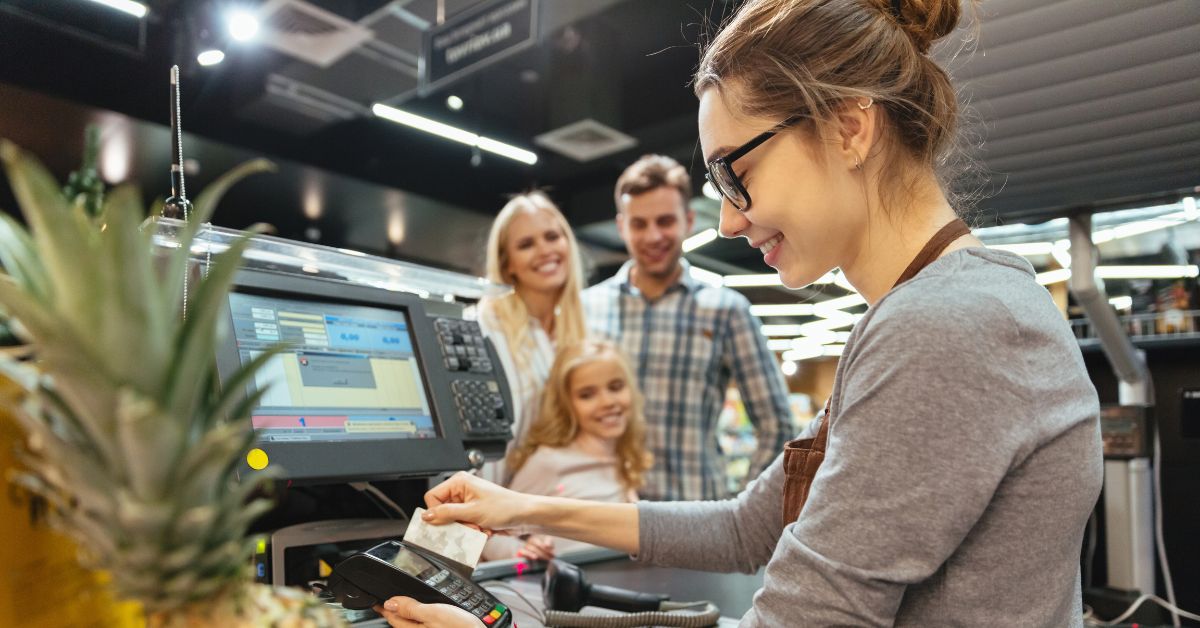Key Takeaways
- Self-service kiosks offer customers enhanced speed, flexibility, and privacy while providing retailers with cost savings and valuable data.
- The Pervasiveness of self-checkout kiosk technology responds to modern shopping demands, including labor efficiencies and the desire for contactless options.
- Challenges related to technical issues and accessibility must be proactively addressed for self-checkout to benefit all shoppers.
- Retailers staying agile in this space will see the most significant returns as technology and consumer preferences continue to shift.
- Ongoing research and news reports reveal new trends, challenges, and future directions for kiosks in retail.
Why Retail Environments Are Rapidly Adopting Self-Service Kiosks
Retailers around the globe are now embracing the self checkout kiosk as an everyday solution, marking a significant transformation in the retail checkout process. Rather than being a novelty or a premium feature, kiosks have become commonplace across pharmacies, grocery chains, and local boutiques. The push toward self-service is fueled by several interlinked factors: persistent labor shortages exacerbated by the pandemic, increased demand for speedy and contact-free shopping, and a wider societal move toward digital convenience. As a result, shoppers today frequently expect to see self-checkout options available, and their absence can even be a point of frustration. Beyond simply following trends, retailers have concrete reasons for investing in kiosk technology. Businesses implementing self-checkout have reported increased customer throughput and reduced checkout labor costs. This adoption isn’t limited to national giants; smaller chains and independents are discovering that self-service can level the playing field in competitive retail environments. The prolific spread of this technology underscores its value beyond mere novelty—it has become a cornerstone of the modern retail approach, addressing operational challenges head-on.
How Checkout Kiosks Streamline the Customer Experience
For shoppers, the value of self-checkout kiosks lies in their ability to speed up transactions and put control directly in the customers’ hands. According to consumer studies, transitioning from waiting in line at a traditional register to scanning one’s purchases has shaved several minutes off the average shopping trip, especially during peak times. This particularly impacts those with just a few items, allowing a quick grab-and-go process. The reduction in wait time isn’t simply anecdotal; supermarkets report over a 30% decline in average wait times following the introduction of self-checkout lanes. The experience further appeals to those who value privacy or autonomy, as shoppers can discreetly manage their transactions—something especially appreciated when buying sensitive products. Families juggling kids and groceries appreciate being able to move at their own pace, while tech-savvy shoppers enjoy navigating familiar interfaces. Customers who prefer minimal social interaction find self-checkout a more comfortable option. As retailers refine the user interface, making systems more intuitive and less error-prone, even hesitators choose kiosks more often.
Retailers’ Perspective: Cost Savings, Efficiency, and Data Insights
The shift toward self-service brings tangible benefits to retailers through cost savings and enhanced staffing flexibility. Where checkout used to require a cashier for every register, self-checkout models enable one staff member to supervise multiple kiosks and assist only when necessary. This redistribution of labor means that employees can focus on high-value tasks such as stocking, customer assistance, or maintaining store cleanliness, leading to more efficient operations overall. Beyond labor efficiencies, self-service kiosks generate a substantial amount of operational and consumer behavior data. Every scanned item declined coupon, and the customer journey through the checkout process can be analyzed to better understand purchasing patterns, inform inventory decisions, and pinpoint sales trends. Modern kiosks can integrate with mobile payment platforms and loyalty programs, providing seamless omnichannel experiences that allow retailers to build stronger customer relationships. This kind of data-driven insight gives businesses a real competitive edge.
Current Challenges With Retail Checkout Kiosks
Despite the evident gains, the journey isn’t without hurdles. Technical challenges can rear their heads as glitches in barcode scanning, payment acceptance issues, or software slowdowns. These moments can frustrate customers, negating some of the speed and convenience expected from self-service. Anecdotes from large retailers confirm that while adoption rates are high, some shoppers still seek out staffed lanes due to concerns about the machinery or because their purchases (such as alcohol or age-restricted products) mandate employee involvement. Another significant challenge is the potential alienation of specific demographics, namely, older adults or those less comfortable with digital interfaces. Not all customers feel confident navigating touchscreens and payment prompts, even when training sessions are provided. Retailers must be ready to balance new technology with supportive Staff on hand, ready to intervene or join shoppers one-on-one to smooth over the learning curve. Finding this balance keeps the store environment welcoming for everyone.
Safety, Hygiene, and Accessibility Considerations
In the past few years, hygiene has taken center stage as a top customer concern. The self-service checkout sector responded quickly, integrating antimicrobial keypads, offering touchless or mobile-enabled payment options, and minimizing points of unnecessary contact throughout the entire process. Many retailers also offer digital receipts, allowing customers to keep track of purchases without handling paper slips, further streamlining and sanitizing the process. Accessibility is another area experiencing rapid progress. Developers are increasingly designing kiosks that cater to all shoppers, adding adjustable screen angles, screen reader capabilities for those with visual impairments, and voice prompts to guide users with low literacy or sight. Adhering to regulations such as the Americans with Disabilities Act (ADA) is now considered fundamental, not just recommended. By embedding these solutions into the core architecture, retailers ensure their technology benefits every customer and reflects a truly inclusive shopping philosophy.
The Future of Retail Checkout: What’s Next for Kiosks?
The self-checkout landscape continues to evolve briskly, with new advances just around the corner. For example, artificial intelligence is poised to improve real-time inventory management and automatically flag unusual scanned items, which speeds up shopping and helps prevent shrinkage and error. There is keen interest in biometric payment options—such as facial or fingerprint recognition—that could further expedite transactions and add additional security without sacrificing speed. Integrating mobile apps and smart devices is another frontier. With the growth of “scan and go” applications, customers now scan items as they shop and pay through their phones, sometimes without ever stopping at a physical checkout terminal. Retailers prepared to embrace and experiment with these new approaches will position themselves at the forefront of the next phase of retail evolution.
Tips for Retailers Implementing Self-Service Kiosk Solutions
- Train Staff Thoroughly: Staff should understand the operation and troubleshooting so customers always have timely help if something goes wrong.
- Post Clear Instructions: Step-by-step guides at every kiosk reduce confusion and empower even inexperienced users to check themselves out confidently.
- Optimize Lane Balance: Continuously monitor usage data to adjust the mix of staffed and self-checkout lanes so every customer finds the experience they prefer.
- Maintain Rigorous Cleanliness: Regular wipe-downs and periodic deep cleans ensure a sanitary environment and reassure health-conscious shoppers.
- Put Customers First: Ask for feedback regularly and adjust processes, layouts, or support offerings as needed to keep satisfaction high and queue times low.
- Invest in Accessibility: Make sure kiosks include accessible features and are placed so all shoppers can comfortably use them, regardless of ability.
Conclusion: Key Takeaways for Retailers and Customers
Self-service kiosks are reshaping the retail checkout landscape, blending technology with an improved shopping experience for everyone. When adopted and maintained with care, kiosks benefit retailers and customers, streamlining transactions and unlocking new ways to serve evolving needs. The path forward is one of innovation, accessibility, and continual fine-tuning; retailers prioritizing ease of use, inclusivity, and helpful support stand to build customer loyalty for years to come. With industry bodies like the National Retail Federation and ongoing academic insight illuminating fresh opportunities and best practices, the self-checkout revolution is poised to become an even more integral part of the shopping journey. As preferences and technology evolve, those who adapt thoughtfully will reap the most significant rewards.
Read More : The Fascinating Phenomenon of Liisbettsis Runnak

